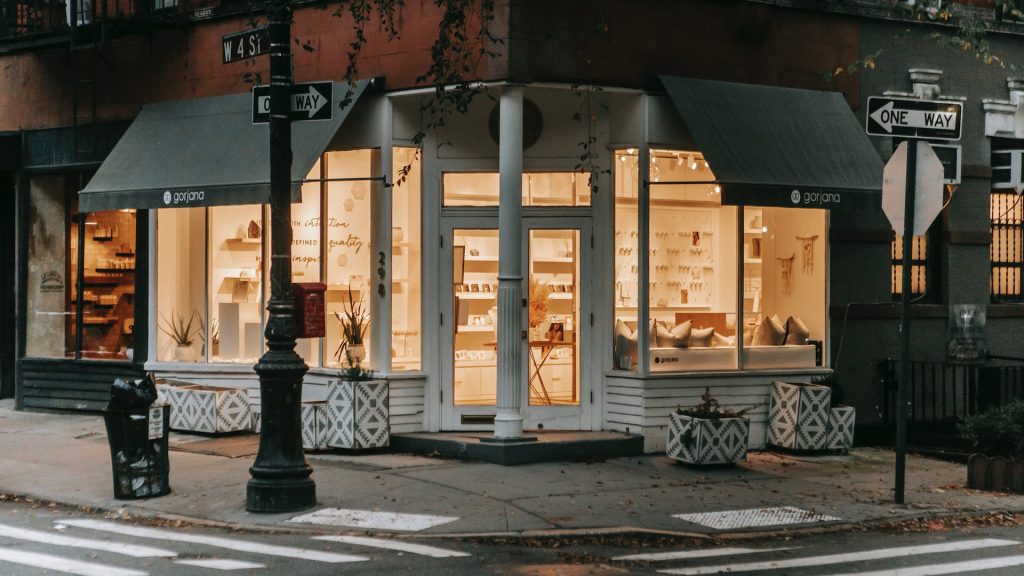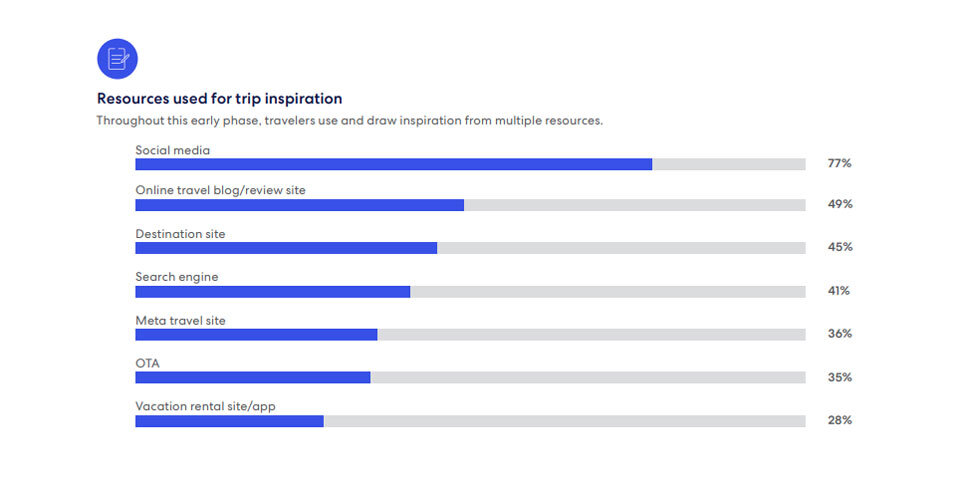
Expedia Group’s latest study of how consumers plan and book travel online surveyed travelers in Australia, Canada, Japan, Mexico, the U.K., and the U.S.A. to reveal preferences and behavior along the path to purchase. The study, aptly named The Path To Purchase, discovered the average path to purchase length—from when a traveler starts thinking about taking a trip to the moment of booking—is 71 days (more than two months!).
NB: This is an article from WebRezPro
Subscribe to our weekly newsletter and stay up to date
That’s a lot of time and a big opportunity for travel brands to influence consumers to book with them. The trick is to engage potential customers at every step along the way.
Let’s go!
Inspiration
Travelers spend an average of 33 days in the inspiration phase. During this time, they seek inspiration from various sources online: 77% turn to social media, 49% to travel blogs and review sites, 45% to destination sites, and 41% to search engines. It’s important for lodging operators to have a presence on these channels to influence potential guests from early on.

Expedia Group, The Path To Purchase 2023
Social media in particular inspires travel aspirations. People mostly use it for destination inspiration (65%) and lodging recommendations (49%) but also for content from friends and family (41%) and influencer content (40%), showing that others’ experiences are a big influence on where to travel and book. In addition to your own compelling images, videos, and promotions, be sure to share user-generated content and consider using influencers to resonate with consumers and earn their trust.
Interestingly, 59% of travelers don’t have a specific destination in mind when they start thinking about taking a trip. Upper-funnel marketing strategies and storytelling are critical to capturing their attention and influencing their decisions.
Online advertising is especially worthwhile during the inspiration phase. It influences approximately 20% of travelers to book a trip, and 67% of those recall noticing ads during this phase. From there, ads attract less attention as travelers move further along the path to purchase.
What kind of advertising content appeals to travel consumers? Just over half (52%) are influenced by beautiful images, 46% by promotions, and 41% by content highlighting interesting experiences.
Takeaways for Hoteliers
- Adopt a multi-channel marketing strategy focused on the channels your target audiences use.
- Share inspirational content on social media, including special promotions and user-generated content, to get attention and earn trust.
- Run targeted social media ads and search engine marketing campaigns that use compelling images and highlight promotions and unique experiences.
Research & Planning
Travelers get busy browsing options, gathering information, and narrowing down their choices during the research phase. On average, they spend 38 days researching and planning their trip. Expedia’s study also found that consumers view an average of 141 pages (277 pages for travelers in the U.S.!) of travel content within the 45 days prior to booking a trip.
Travelers use a variety of sources to shop around, including search engines, meta travel sites, social media, destination sites, OTAs, and hotel websites. In addition to maintaining a great website and robust SEO strategy, it’s important to ensure your information is up to date across those other channels too.




